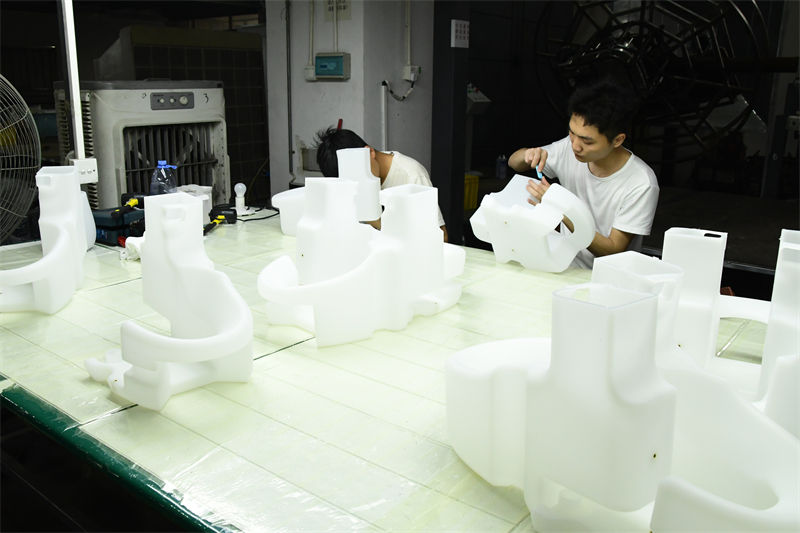Manual Deburring Process for Rotomolded Products
 Jul 02,2024
Jul 02,2024

Manual Deburring Process for Rotomolded Products
In the rotational molding process, the absence of external pressure during molding results in parts that are virtually stress-free, with the exception of minor shrinkage forces. This significantly diminishes the formation of burrs. Despite this, the choice of mold and resin, along with the product's complexity, can still lead to the creation of burrs. These are typically addressed through the use of manual deburring, ensuring that the product's finish and quality meet the required standards.
The manual deburring process for rotomolded products involves several steps to ensure the effective removal of burrs. Here's an overview of the process.
1. Inspection
The initial phase of the deburring procedure involves examining rotomolded products for the presence of burrs. This scrutiny facilitates the identification of areas necessitating deburring and determines the appropriate tools and techniques to employ.
2. Selection of Deburring Tools
Depending on the type and size of the burrs, the appropriate deburring tools must be selected. Common tools include files, sandpapers, emery boards, and rotary deburring tools. It is essential to choose the right tool to avoid damaging the product's surface or structure.
3. Deburring Process
The selected deburring tools should be used carefully to remove the burrs from the rotomolded product. For small burrs, fine grit sandpapers or emery boards can be used. For larger burrs, files or rotary deburring tools may be more effective. It is crucial to apply gentle pressure and move the tool in a consistent motion to avoid scratching or gouging the product's surface.
4. Surface Finishing
Post-deburring, the surface of the rotomolded product may require additional refinement to achieve the desired level of smoothness or texture. This can be accomplished using finer grit sandpapers, polishing compounds, or automated finishing apparatuses.
5. Quality Control
Upon completion of the deburring and surface finishing operations, the rotomolded products should undergo stringent quality control assessments. This ensures that all burrs have been effectively eliminated and that the product's surface conforms to the specified requirements.

By meticulously inspecting and deburring the products, rotational molding manufacturers can mitigate potential issues associated with burrs, thereby elevating customer satisfaction and product performance. The implementation of an efficient deburring protocol not only enhances the final product but also contributes significantly to the overall success of the rotational molding industry.
 Tel: 0086-13632687993
Tel: 0086-13632687993  Email: roto@lightvenus.com
Email: roto@lightvenus.com

 Home
Home How to Prevent the Rotomolded Products from Deformation in Rotational Molding Process
How to Prevent the Rotomolded Products from Deformation in Rotational Molding Process  You May Also Like
You May Also Like



 Tel
Tel
 Email
Email
 Address
Address








